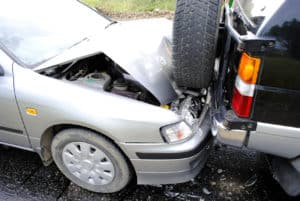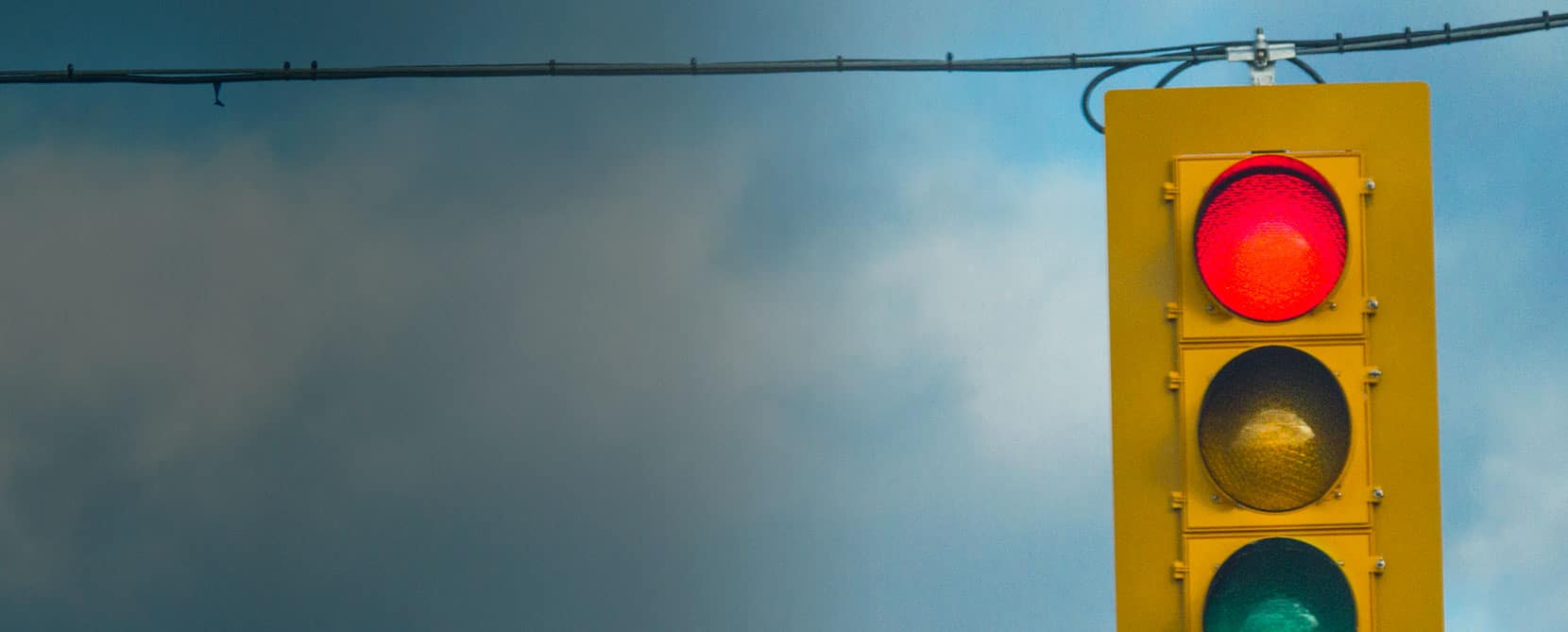
Traffic intersections can be incredibly dangerous. In fact, statistics show that approximately 33 percent of all traffic accidents occur at the intersection of two roads. A staggering number of these car accidents happen at red and yellow lights.
Yellow lights are supposed to warn drivers that the signal will be changing shortly and encourage them to slow to a stop. However, many drivers see a yellow traffic signal and immediately get the urge to speed up and beat the light before it turns red. Dangerous driving behaviors like this one put everyone on California’s roads in danger. Contact the Los Angeles car accident lawyers at Citywide Law Group if you’ve been hurt in red/yellow light accident.
Causes of California Intersection Accidents
Drivers may not fully understand their obligations at a traffic signal, or they may simply ignore their duty to drive with caution.
Rear End Accidents
Many of California’s rear-end car accidents happen at intersections. In most cases, the car at the very rear of the accident is determined to be at fault. Rear-ending accidents are common because drivers have different opinions about what a yellow light means.
An accident is likely to happen if Driver A sees the traffic signal turn yellow and begins to slow down, while Driver B, directly behind him, thinks that the yellow signal means that they should be rushing to get through the intersection. Driver B may drive directly into the back of Driver A’s slowing vehicle, causing a crash.
Rolling Through Red Lights
Drivers in California may be allowed to make a right-hand turn at a red light. However, California law requires all drivers to come to a complete stop at a red light and check for oncoming traffic and pedestrians before executing the turn.
Some intersections even ban right-hand turns on red. Drivers who fail to come to a complete stop are more likely to miss oncoming traffic or fail to see a pedestrian in a crosswalk.
Speeding Up to Beat a Changing Signal
Yellow means “slow down,” right? Unfortunately, for too many California drivers, yellow means “hurry up and get through the intersection before the light changes.”
Intersections, especially those where heavily-traveled freeways meet, are already dangerous enough without vehicles racing through. Drivers who try (and fail) to beat the red light risk colliding with those drivers who hit the gas as soon as their signal turns green.
Tricky Left Turns
Left turns at intersections can be difficult. Many California cities are installing left-turn signals, which significantly reduce the times when a left-hand turn can be executed.
When there is no left-turn signal, drivers must gauge oncoming traffic and check crosswalks to ensure safe passage. Blind turns, unexpected pedestrians, and the urge to beat the red light can result in serious accidents.
Driver Responsibilities at Red and Yellow Traffic Signals
While drivers may have their own opinions about what red and yellow lights mean, California law provides some clarification.
Steady Yellow Light: California Vehicle Code 21452 explains that a steady yellow traffic signal means “the related green movement is ending or that a red indication will be shown immediately thereafter.”
Steady Red Light: California Vehicle Code Section 21453 explains that when facing a steady right traffic signal, drivers must stop at either (a) a marked line, (b) before entering the nearest crosswalk, or (c) before entering the intersection. Drivers must remain stopped until the light changes or they can safely perform a right-hand turn, as permitted by law.
Steady Red Arrow: Many California cities are installing arrow signals to reduce the number of red and yellow intersection accidents. When facing a steady red arrow, drivers must stop at a marked line or, if there is no mark, refrain from entering the crosswalk and/or intersection. Drivers must remain stopped until the light changes.
Flashing Yellow Light: Some intersections may have traffic signals equipped to display a flashing yellow light. California Vehicle Code Section 12454 states that drivers may use these lanes of traffic to make left-hand turns at an intersection. When approaching an intersection at a flashing yellow light, drivers must yield to oncoming traffic and check crosswalks for pedestrians. Only once the coast is clear may drivers execute their turn.
Entering or Crossing Highways: Drivers who would like to enter or cross highways from any private or public location – including other roads, private drives, and parking lots – may do so, but with extreme caution.
California Vehicle Code Section 21804 states that these drivers must yield the right of way to all traffic on the highway. Once the coast is clear, the driver may begin to cross or enter the highway. At this time, all other drivers must yield the right of way to the driver entering the highway. In other words, drivers must wait until it is safe to cross or enter a highway. Once they begin to enter or cross, other cars must yield until the driver has successfully entered the flow of traffic or crossed the road.
Four Way Stop: There may be times when two drivers simultaneously approach an intersection from different highways. When an intersection is controlled by stop signs or inoperative traffic signals, the driver of the car to the right has the right-of-way. California Vehicle Code Section 21800 states that “the driver of the vehicle on the left shall yield the right-of-way to the vehicle on his or her immediate right.”
Liability for Red and Yellow Light Accidents
What happens when you are involved in an accident in a California intersection? If you suffer an injury, who is responsible for compensating you for any damages you may have?
In California, more than one person can be responsible for causing an accident. When this happens, each person who contributed to an accident or injury is held liable to their own degree of fault. Victims can also be held responsible for their own harm if they contribute to the accident. Any damages that you may be entitled to recover can be reduced by your own degree of fault.
Negligence
Most California intersection accidents are the result of driver negligence. All drivers in California have an obligation to drive safely. This requires drivers to hold a valid license, obey local traffic laws, and operate their vehicle with care and caution. If a driver breaches this obligation in some way (e.g., speeding, aggressive driving, distracted driving) and causes an accident, they will be considered negligent.
Negligence Per Se
California law imposes certain legal requirements on drivers. Drivers must obey the “rules of the road” to avoid traffic tickets and ensure that California roads are safe. When a driver violates a traffic law (including those concerning conduct at an intersection) and causes an accident, they may be considered negligence per se.
Negligence per se simply means that the driver is automatically considered to be negligent because they broke the law. This makes it easier for victims to recover compensation in an accident. In traditional negligence cases, a victim has to establish all elements of negligence (duty, breach, causation, damages). When a driver violates the law, the victim must only prove:
- The driver violated a law
- The victim suffered an injury because of that violation, and
- The law that was broken was intended to prevent this type of harm.
What Should I Do After a Yellow and Red Light Accident?
Red and yellow light accidents can be incredibly dangerous. If you have suffered an injury in an accident at an intersection, you may be entitled to compensation. It is important to understand that the decisions you make immediately after an accident will affect any future legal claims you file.
Here’s what you should do after an accident at an intersection:
1. Move away from the crash.
Intersection crashes are particularly dangerous because you are literally at a crossroads. Oncoming traffic may not see the crash immediately, causing them to add to the damage. If you have the ability to do so, move away from the scene of the accident to a safe location.
2. Get medical help.
See a doctor or other healthcare professional immediately for a full medical evaluation. Car accident injuries can be catastrophic and, if left untreated, can have deadly complications. The doctor will make sure that all of your injuries are diagnosed and treated. Your attorney will be able to use the medical report to link your injuries to the accident.
3. Report the accident.
Call police immediately to report the accident. They will investigate the crash, take notes, and generate a report containing valuable information about your accident.
4. Gather evidence.
Take video footage of the scene of the crash. Write down your memory of the event. Take photographs of any property damage and physical injuries you’ve suffered. This can help to document important details about your accident that may fade with time.
5. Avoid conversations with insurance companies.
Insurance companies will want to minimize the compensation you are awarded. Since determining liability for red and yellow light accidents can be tricky, they may refuse to honor any request for compensation, claiming that you are at-fault. Anything you say during initial conversations can be manipulated and used against you, so it is best to remain silent. Direct any communication to your attorney.
6. Hire an experienced California car accident attorney.
When you let an attorney handle your case, the chances of maximizing the award you receive increase significantly. Hiring an attorney will level the playing field with insurance companies and help to ensure that you are not taken advantage of during this stressful time. Call Citywide Law Group today for a free consultation with our experienced car accident attorneys.
California Car Accident Attorneys
Have you been injured in a traffic accident at an intersection? Was the traffic signal yellow or red? Determining liability and proving fault can be tough; the California car accident attorneys at Citywide Law Group can help.
We have over 17 years of experience handling complex personal injury cases. During this time, we have successfully helped injured clients recover millions in much-needed compensation. Call a Los Angeles personal injury lawyer at Citywide Law Group today to set up a free consultation and find out how we can help you, too.





